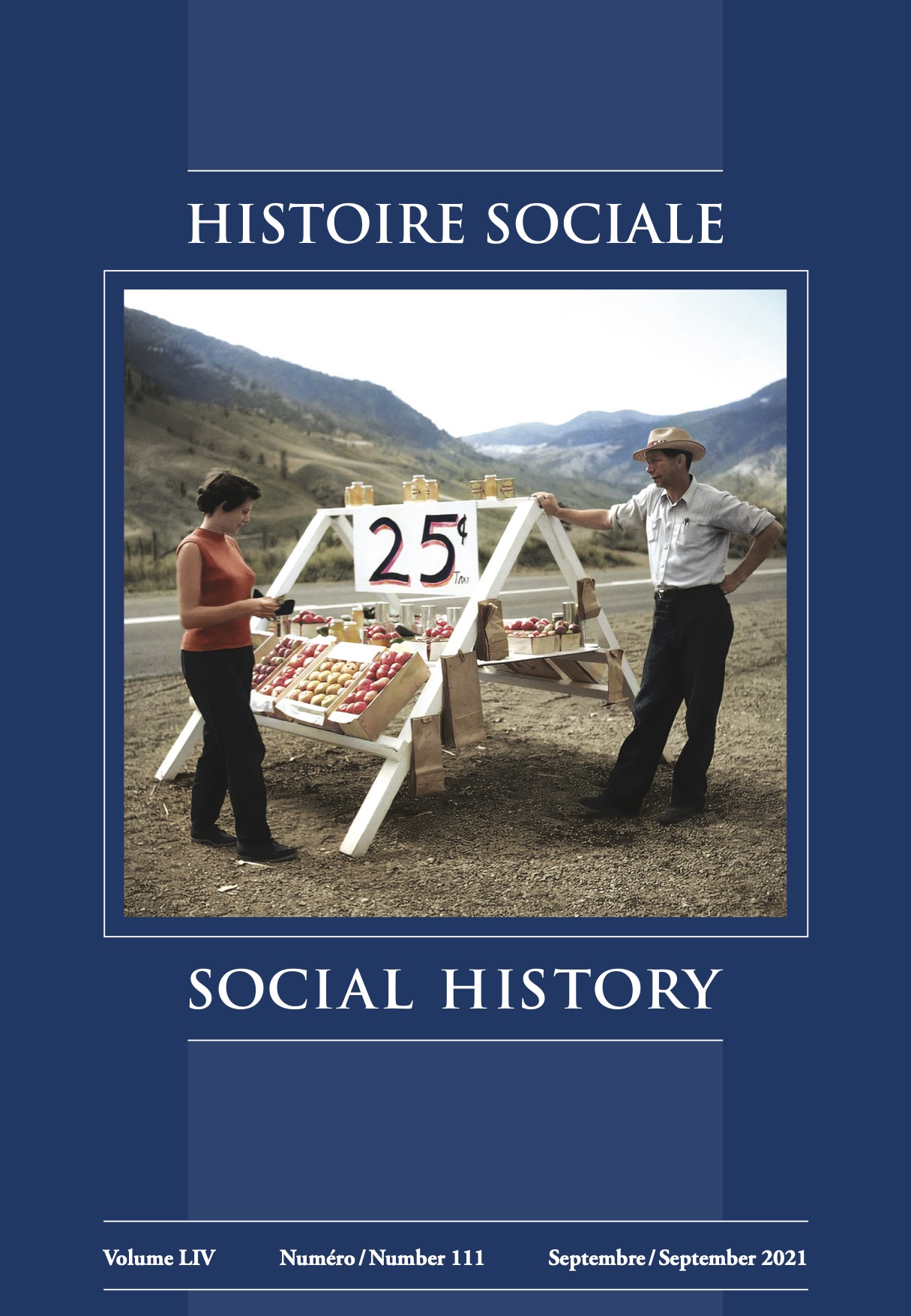Subsistence Production and Commodity Production in the British Imperial Food System: The Case of Nova Scotia Apples
DOI:
https://doi.org/10.1353/his.2021.0037Abstract
The history of agriculture in Nova Scotia’s Annapolis Valley before the Second World War has mostly been written as a story of the marketing of apples to Britain. Indeed, the valley in the first half of the twentieth century featured the full apparatus of industrial fruit production: grading and inspection systems, mechanical sprayers delivering chemical sprays, expert advice, and an infrastructure of railways, packing houses, storage facilities, and commercial intelligence. Analysis of government and other expert reports, as well as diaries, oral interviews, and census data, reveals that the business of supplying apples to global markets was built on a foundation of household production that mixed commodity crops with the making of crop and animal products for local markets and the growing of food for farm families. For valley farmers, selling on global capitalist markets was only part of a range of strategies for household subsistence.


